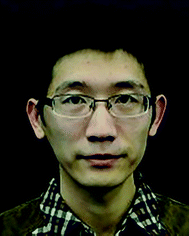Themed issue on 2D materials
Manish
Chhowalla
*a,
Zhong
Lin
b and
Mauricio
Terrones
bc
aMaterials Science and Engineering, Rutgers University, 607 Taylor Road, Piscataway, New Jersey, USA. E-mail: manish1@soe.rutgers.edu
bDepartment of Physics and Center for 2-Dimensional and Layered Materials, The Pennsylvania State University, University Park, Pennsylvania 16802, USA
cDepartment of Chemistry and Department of Materials Science and Engineering, The Pennsylvania State University, University Park, Pennsylvania 16802, USA
 Manish Chhowalla |
 Zhong Lin |
 Mauricio Terrones |
Two dimensional (2D) materials, in particular transition metal dichalcogenides (TMDs) and others such as organic 2D materials, phosphorene and Zintl phases, continue to be actively researched. This is due to the fact that they possess physico-chemical properties that are ideal for carrying out truly interdisciplinary research. Synthesis of 2D materials, both from chemical vapor deposition (CVD) and chemical exfoliation, requires fundamental knowledge of materials chemistry. Characterization of these structures requires state-of-the-art analytical techniques that are able to probe both the atomic and electronic structures. These 2D systems possess versatile electronic, optical, and electrochemical properties that could revolutionize nanoelectronics, nanophotonics, and energy storage components. Therefore, the exploration of novel synthetic methods, detailed analyses of their properties, their incorporation into devices using non-traditional fabrication methods, and the demonstration of novel proof-of-concept devices are important topics in the field. In addition to these, tailoring the physical and chemical properties through functionalization and the realization of new phases are key new areas of research.
This themed issue in Journal of Materials Chemistry C has assembled a wide selection of highlights, communications, reviews and articles on 2D TMDs, phosphorene and Zintl phases. The papers deal with new developments regarding the synthesis of 2D materials and their allotropes, such as nanoscrolls, using atmospheric plasma. Low-energy plasma has not been widely applied in 2D materials research but may be useful for achieving novel phases and modification of the atomic structure. Solution synthesis of 2D materials and their nanostructures is also a powerful alternative to scalable manufacturing, and needs further research. In this context, colloidal synthesis of few-layered Mo-doped and pristine WTe2 is reported. Another paper reports the assembly of large-area and uniform Langmuir films of MoS2. However, the integration of 2D materials into devices is still challenging and this is addressed in another contribution discussing the application of direct microprobing to measure the electrical transport of 2D materials without using lithography.
In addition to synthesis and device fabrication, this themed issue also includes papers describing detailed analyses of the electronic and optical properties of 2D materials. Fundamental understanding of these properties is key for their integration into real devices. A basic understanding of their properties also allows tuning using chemistry at the nanoscale. This issue also contains several manuscripts reporting detailed characterization of vibrational and optical properties of WS2, spectroscopic evidence for momentum-dependent electron phonon coupling in 2H-TaS2 and optical properties and Raman modes of 2D Zintl phases. Regarding tuning the physico-chemical properties of well-characterized 2D systems such as MoS2, two studies report modifications using hydrogen plasma and porphyrin functionalization.
Finally, the integration of 2D materials into devices is essential, and can be translated into useful applications. Therefore, we have included papers reporting proof-of-concept demonstrations of devices with exciting properties. For example, photodetectors based on SnS are described in one study while in another contribution, high-performance field effect transistors based on printed 2D organic films are described. High mobility transistors are also the topic of an interesting study describing planar BP3 as a phosphorene analogue.
It is therefore clear that this themed issue provides a timely mix of complementary papers that demonstrate the breadth of 2D materials research. It also demonstrates that the field remains rich for further exploration and much remains to be done when understanding and exploiting atomically flat materials.
| This journal is © The Royal Society of Chemistry 2017 |
